Tianjin Port(Chinese: 天津港) is located in Binhai New Area, Tianjin, China, at the western end of the Bohai Bay. It is China’s largest artificial deep-water port.
As of 2019, the total length of the Tianjin coastline is 32.7 kilometers, with a water area of 336 square kilometers and a land area of 131 square kilometers.
Tianjin Port is composed of 5 port areas: North Xinjiang Port Area, South Xinjiang Port Area, East Xinjiang Port Area, South Port Economic Area, and South Port Area East Area. In 2018, the cargo throughput was 444.06 million tons, and the cargo throughput of foreign trade was 254.64 million tons.
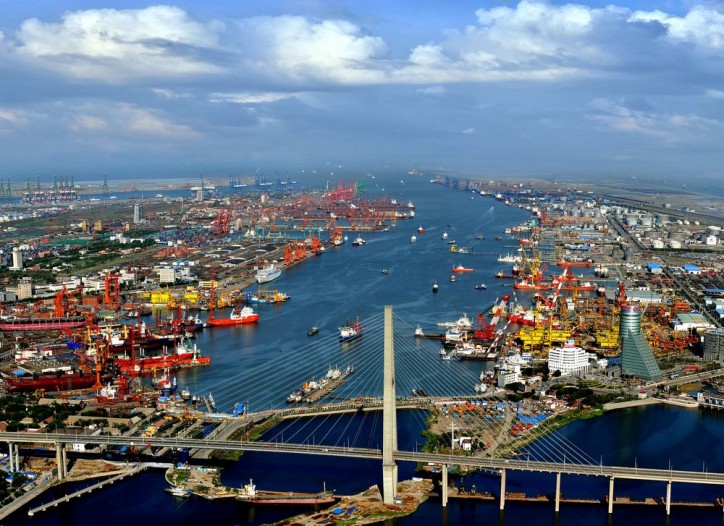
Tianjin Port History
Before the third century AD, the people of northern China used natural rivers in Tianjin to carry out water transportation activities.
In the Eastern Han Dynasty, the feudal dynasty demanded the military to transport soldiers and transport grain, so it recruited civilian husbands, dug river channels, and connected the rivers to join the sea, forming an inland navigation network with the Haihe River as the main body.
In the Tang Dynasty, Tianjin Port was formed.
In the second year of Ming Yongle (1404), Ming Chengzu Zhu Di gave the name “Tianjin”.
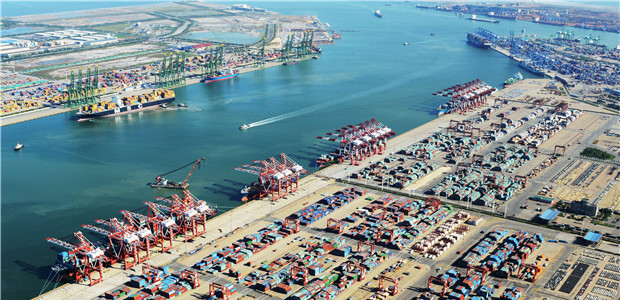
In 1858, the Second Opium War was defeated, the Qing government signed the “Tianjin Treaty”, and Tianjin Port was one of the foreign trade ports.
During the ten years of Qing Xianfeng (1860), Tianjin Port opened to the outside world and became a trading port.
In the 26th year of the Republic of China (1937), after the July 7th Incident, the Japanese invasion of China invaded China and took over most of the docks in Tianjin and Tanggu. THE Port became the largest inland foreign trade port in northern China.
In October 29th of the 29th year (1940), Tianjin Xingang officially started construction.
In the 34th year of the Republic of China (1945), Tianjin Xingang was destroyed by the surrender of Japan and the Kuomintang army, and it became a dead port with hundreds of holes.
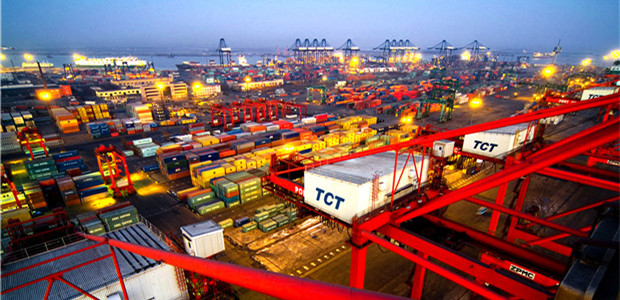
On October 17, 1952, Tianjin Port reopened.
In 1966, The Port built 5 berths above 10,000 tons, with throughput exceeding 5 million tons in one fell swoop.
In 2005, Tianjin Port completed the construction of a 100,000-ton waterway and a large oil terminal, and built a deep-water port, a container transit port, and a shipping and logistics center in northern China.
On November 9, 2011, the Tianjin Port Zhangjiakou Logistics Base started construction and laid the foundation stone.
On April 10, 2013, The Port and Dalian Port signed a strategic cooperation framework agreement on cooperation and exchanges in eight aspects including port production and operation management, logistics business, and port construction investment.
On 12 August 2015, There was a big explosion in The Port.

In 2017, Tianjin Port started the smart port planning and released the Three-Year Action Plan for the “Smart Port” Construction.
In 2018, the world’s first driverless electric truck was put into trial operation in The Port.
On December 28, 2019, the intelligent container terminal of Section C of the North Xinjiang Port Area started construction.
Hardware facilities
Berth
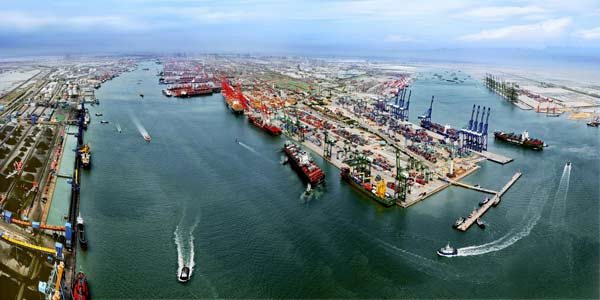
As of 2014, Tianjin Port has 159 berths, 55 berths above 10,000 tons, including 1 berth of 200,000 tons, 2 berths of 100,000 tons, 11 berths of 70,000 tons and 50,000 tons. The total length of the public berth shoreline is 14.5 kilometers.
Channel
As of June 2016, the main channel of Tianjin Xingang was 27.3 kilometers long. A 10,000-ton ship could sail in both directions, and a 50,000-ton freighter and a third-generation container ship could be accepted on the tide.
Smart port construction
In 2017, The Port released the “Three-year Action Plan for the Construction of “Smart Port” in Tianjin Port” (2017-2019), which opened a fast-forward mode for the construction of “smart port”.
In 2018, the world’s first unmanned electric truck was put into trial operation in Tianjin Port. Under unmanned intervention, the unmanned electric truck equipped with lidar, high-definition camera and intelligent computing unit can complete road driving, precise parking, The specified actions such as container loading and unloading and obstacle response have realized the horizontal transportation of the container from the shore to the yard.
On December 28, 2019, the intelligent container terminal of Section C of the North Xinjiang Port Area started construction. It is located on the west side of the North Port Pool, with a total length of 1100m along the shoreline of the terminal. Large container ships are berthing around the clock.
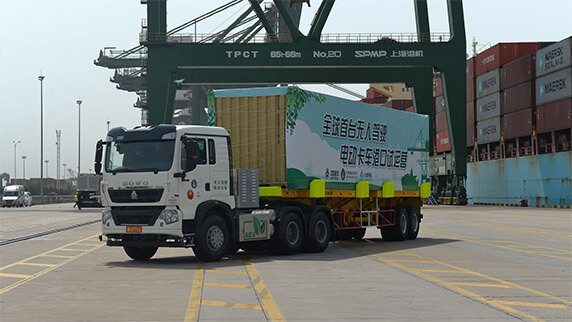
Operation status
Flight route
Tianjin Port has trade relations with more than 500 ports in more than 180 countries and regions in the world. There are 120 container liner routes and more than 550 monthly flights, connecting all major ports in the world.
On July 8, 2019, the world’s largest container ship “Mediterranean Gulson” made its maiden voyage in Tianjin Port.
Passenger and freight traffic
In 2013, the cargo throughput exceeded 500 million tons, and the container throughput exceeded 13 million TEU.
In 2016, the total cargo throughput reached 550 million tons, and the container throughput reached 14.5 million TEU.
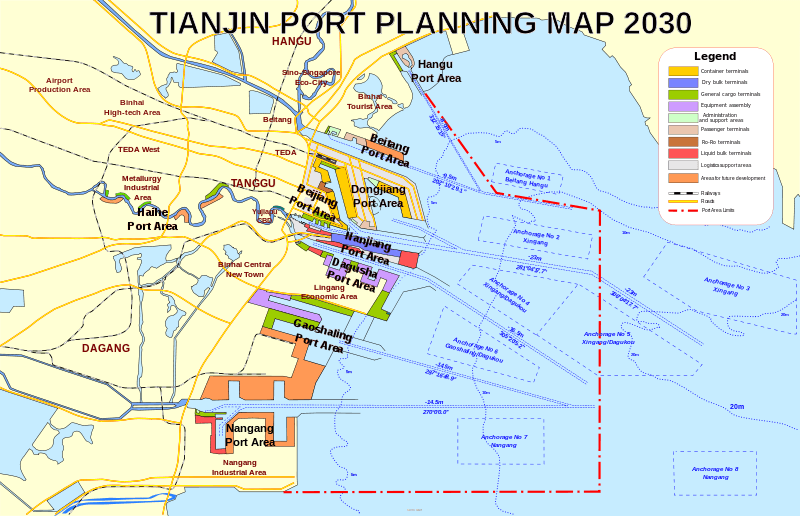
In 2018, the cargo throughput was 440.64 million tons, which was flat year-on-year; among the top ten ports in the world in terms of cargo throughput, Tianjin Port ranked ninth.
The throughput of foreign trade goods was 254.64 million tons, a decrease of 3.1% year-on-year, and the throughput of domestic trade goods was 18.74 million tons, a year-on-year increase of 4.7%.
Container throughput completed 16.04 million TEUs, an increase of 6.2% year-on-year, of which foreign trade container throughput was 8.03 million TEUs, a year-on-year decrease of 0.2%, and domestic trade container throughput was 7.974 million TEUs, an increase of 13.5% year-on-year.
It has received 116 international cruises, with 683,000 passengers entering and leaving the country.
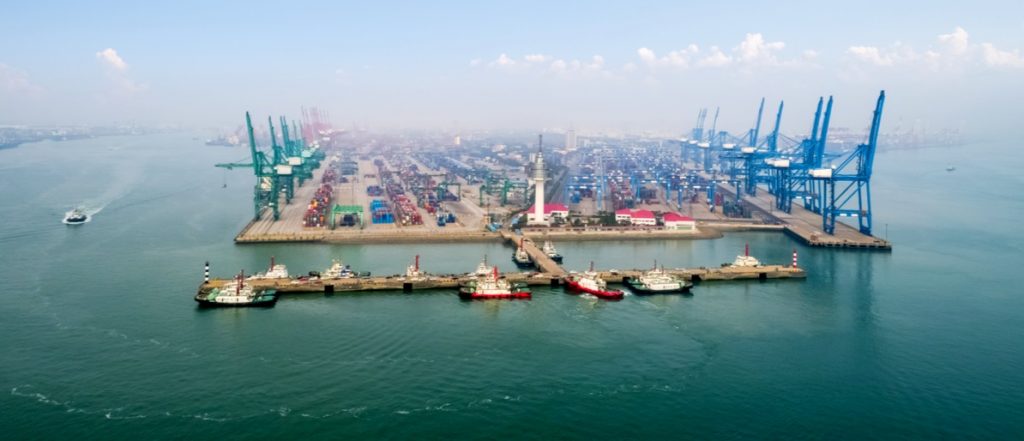
Tianjin Port Data
- Country
- China
- Official name
- 天津港
- Other name
- Tanggu Port
- Location
- Bohai Bay, Binhai New Area, Tianjin
- Year of opening
- 1404 AD
- Industrialization date
- 1860
- Status
- In use
- Operator
- Tianjin Port Group Ltd
- Port type
- Deepwater seaport, Riverport
- Features
- Smart port, Artificial port
- Region
- East Asia
- Sea area
- Bohai Sea
- Annual container volume
- 16 million TEU (2018)
- Annual cargo tonnage
- 446 million tons (2018)
- Water area
- 336 square km (2019)
View Tianjin Port on Google Satellite Map
Google satellite maps allow you to see building details more clearly, including natural landscapes such as mountains, rivers, deserts, sea and man-made engineering buildings.
If you are very interested in this engineering building, it is a good idea to click below Google Map icon. We will help you jump to the corresponding location of this building or engineering on Google satellite map.






























































